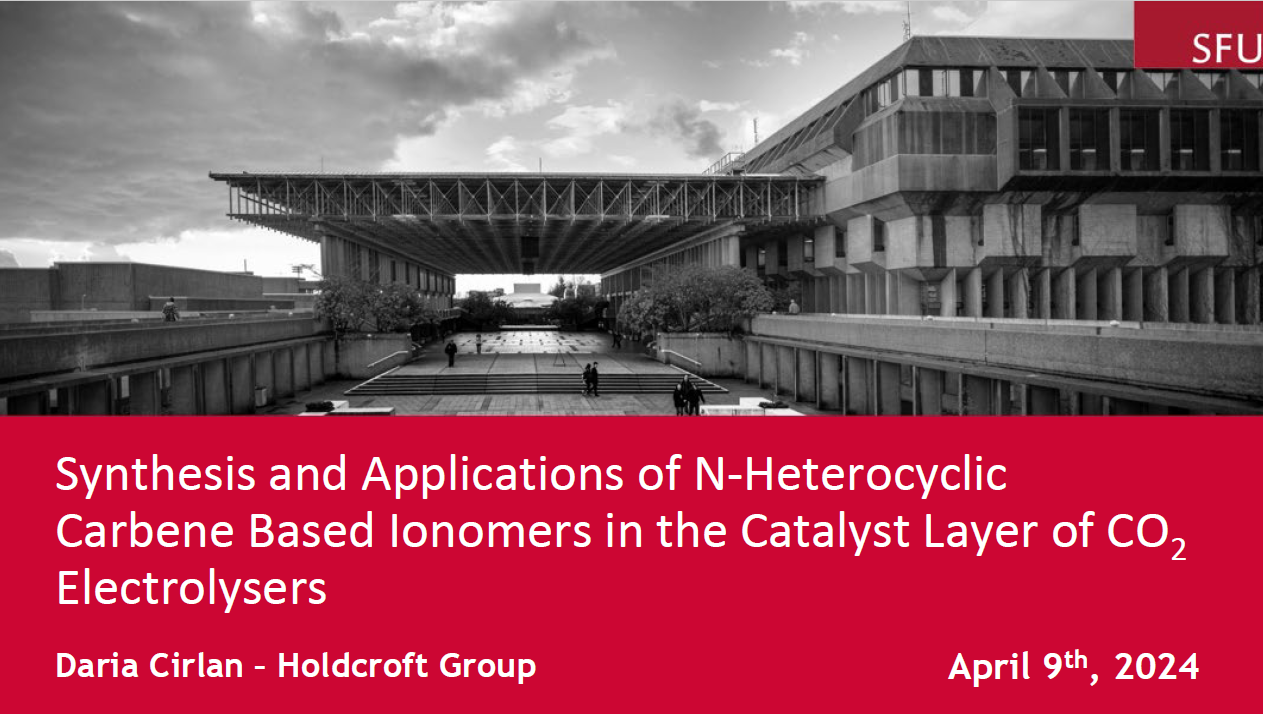Synthesis and Applications of N-Heterocyclic Carbene Based Ionomers in the Catalyst Layer of CO2 Electrolysers
Main Article Content
Abstract
With the rise in global warming, carbon dioxide conversion into valuable chemicals and fuels becomes a higher priority. CO2 electrolysers are able to produce carbon monoxide, which can in turn be used in the synthesis of various hydrocarbons or alcohols. A key component of zero-gap CO2 electrolysers is the triple phase boundary (TPB) formed at the catalyst layer. This is where the gaseous phase (CO2), ion conducting phase (electrolyte), and the electron conducting phase (Ag/C catalyst) come into contact, allowing the reduction of CO2 into CO, known as the CO2 reduction reaction (CO2RR). The problem is, a competing reaction at the Ag/C electrocatalyst is the hydrogen evolution reaction (HER), producing H2. As it is more thermodynamically favourable at the overpotential used for the CO2RR, this side reaction reduces the overall Faradaic efficiency (FE) of the cell. It is noteworthy that, N-heterocyclic carbenes (NHCs) can form stable covalent bonds with various metals and would be suitable ligands in electrolysers. Through affecting the TPB by binding the NHCs to the Ag/C catalyst, a favourable environment for key intermediates in the CO2RR can be achieved. Corollary, novel NHC-ionomers synthesized will be incorporated into the catalyst layer as binders in order to increase the Faradaic efficiency of CO2 electrolysers.
Article Details

This work is licensed under a Creative Commons Attribution-NonCommercial-NoDerivatives 4.0 International License.

